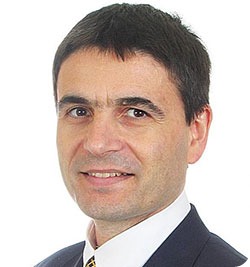Although several chemotherapy treatments are now administered by the oral route (targeted chemotherapy), most chemotherapy treatments (cytotoxics) are administered by the intravenous route.
Since some of these drugs are chemically aggressive for venous endothelium, they can hurt veins, and this is the reason why access ports are commonly used.
What are access ports?
Chemotherapy is sometimes chemically aggressive for venous endothelium. Thus, is cannot be administered in a small vein (with limited blood flow).
In this case, access ports are used, and consist into small reservoirs that are surgically placed under the skin. These reservoirs are linked with a small catheter (tube) which enters by its other end into a blood vessel with high flow, which allows quick dilution into the blood stream.
In order to fill the port, the face which is under the skin has a hole which is closed by a membrane that can be transpierced with the needle of a syringe, through the skin.
How long can these devices be left in place?
They can be left in place for several months or even years.
Do the implantable ports used to administer chemotherapy present a risk of infection for patients?
The risk is the introduction of bacteria when the port is filled by a needle through the skin (i.e. introducing bacteria that would be present at the surface of the skin), and that bacteria proliferate in a place where they are hidden from the immune system (i.e. within the port or the catheter linked to the port).
How can this risk of infection be reduced?
This risk can be reduced by using materials on which bacteria cannot proliferate.
What type of materials are bacteria unable to proliferate on and why?
Bacteria can proliferate on any material, as long as they can adhere (except in presence of antibiotics / antiseptics).
Curie-Cancer and Vygon signed an initial partnership in 2010 to design implantable ports with greater infection resistance. What has been done to develop these ports?
What has been done is the development of a coating procedure which prevents / reduces bacterial proliferation.
What stage of development are the implantable ports currently at?
They are at late-stage development.
Please can you give an outline of the development procedure to date?
The procedure is that of a CE marking (or equivalent).
The three-year initial partnership between Curie-Cancer and Vygon has recently been extended. What do you hope to achieve from the extension of this arrangement?
The extension period covers completion of the development of the coating procedure that I mentioned earlier, then the initiation of totally different research on a totally different range of products with a totally different technology.
How long do you think it will take to bring the new range of products to the international market?
I expect it to be up to a few years but it could be months.
What impact do you think these products will have?
As the coating is expected to reduce bacterial adherence/proliferation, the products are expected to be less sensitive to infection.
As a result, they should lead to a reduction of the incidence of (nosocomial) infections due to access ports.
How do you think the future of chemotherapy administration will develop?
The mode of administration is dependent of the molecule. The oral route is more convenient (especially for long-term administration), but is not always possible.
As far as the intravenous route is concerned, the use of access ports is expected to develop.
Why is it not always possible to administer chemotherapy via the oral route?
Oral route is not possible when for example, the chemical nature of the drug makes that it is not absorbed by the digestive tract. It is also the case when absorption (and pharmacokinetics) is variable from a patient to another although treatment would require fine adjustment of dose.
What are Curie-Cancer’s plans for the future?
Our plans for the future in terms of medical devices with Vygon, are to investigate new types of coatings, addressing other types of issues.
Where can readers find more information?
www.curie.fr and www.vygon.com
About Damien Salauze
 Damien Salauze has extensive experience as a pharmaceutical and biotechnology industry executive and venture capital investor in life science companies.
Damien Salauze has extensive experience as a pharmaceutical and biotechnology industry executive and venture capital investor in life science companies.
Currently he serves as VP, Business Development & Licensing at Institut Curie, Paris, and is Head of the “Curie-Cancer” Carnot institute (the body responsible for developing Institut Curie’s industry partnership activities).
DamienSalauze previously held positions at Aventis (Head of a Toxicology Department, then Senior International Marketing Director [Oncology]), Auriga Ventures (Partner), Novagali Pharma (CEO), Sepal Pharma (CEO).
He sits on the Board of Directors of several companies, and has recently been elected at the French National Academy of Pharmacy.
He obtained his PhD from Institut Pasteur, Paris, and his MBA from Insead.